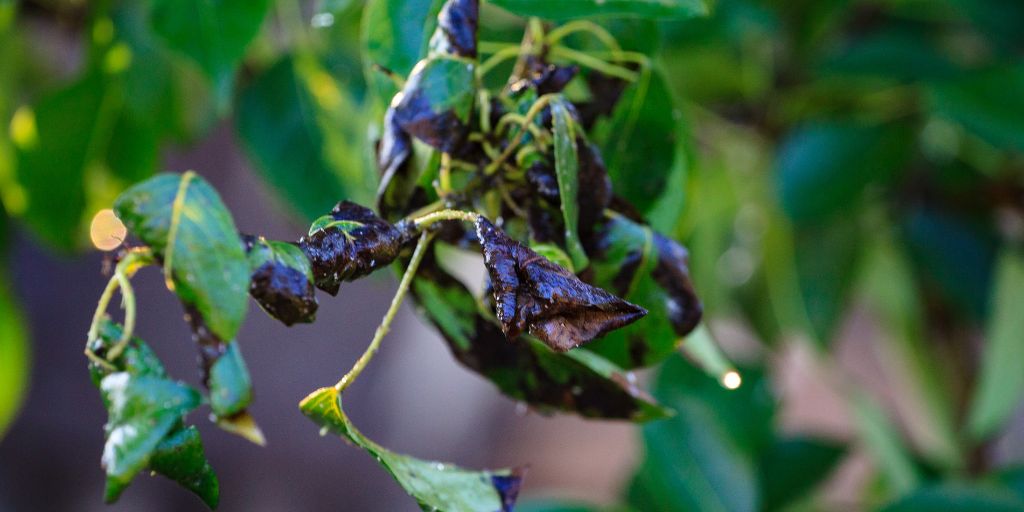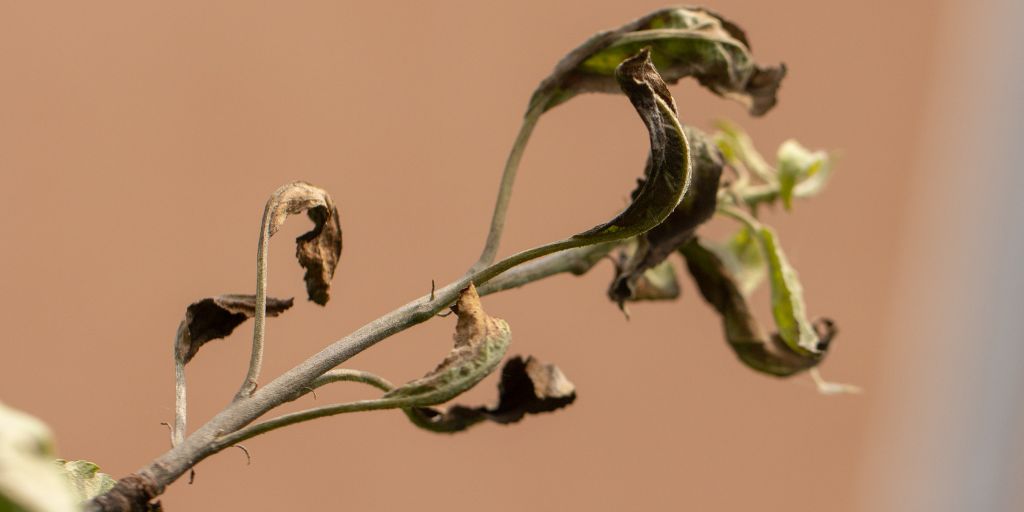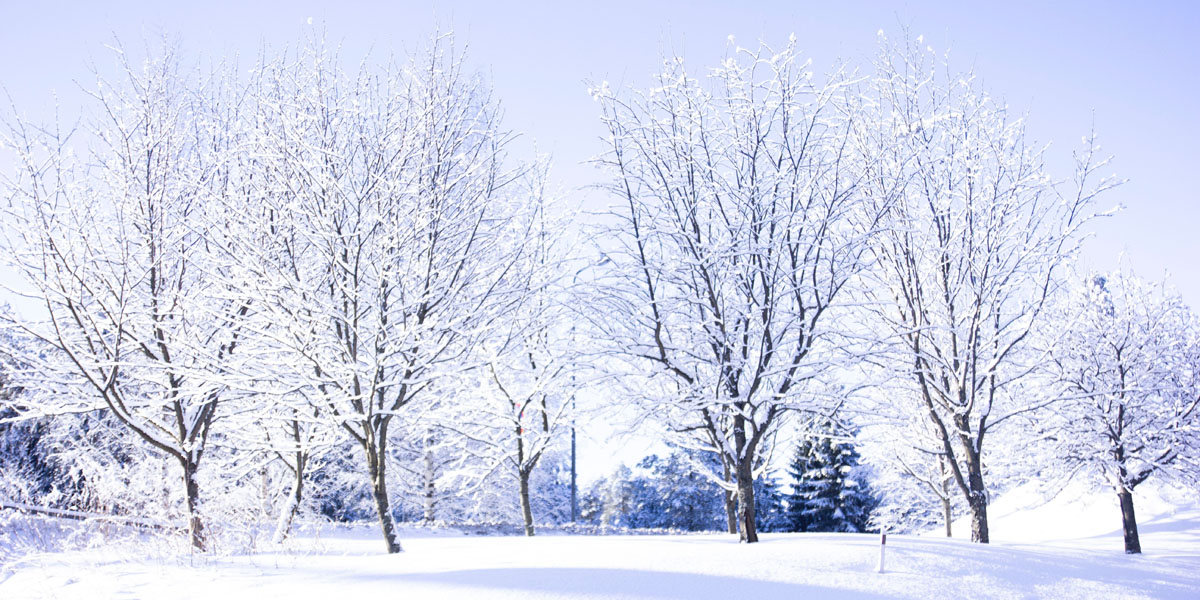If you have a tree or plant in the Rosaceae family, such as an apple tree, pear tree, crabapple tree, or rose bush, you may notice dead branches, black leaves, and/or dried fruit, symptoms of a disease called fire blight.
Fire blight is a bacterial disease that currently has no cure but can be prevented.
In this article, we will cover:
- The symptoms of the disease
- Which trees and plants it can affect
- How to prevent fire blight on your property
- What to do if you notice fire blight
Keep reading to learn more about this destructive tree and plant disease and how it may show up on your New Jersey property.
Trees and Plants Impacted by Fire Blight
The good news is that the disease only attack certain plants and trees, specifically certain species in the rose (Rosaceae) family, including:
- Apples (Malus )
- Pears (Pyrus)
- Crabapples (Malus)
- Serviceberries (Amelanchier)
- Flowering quinces (Chaenolmeles)
- Cotoneasters (Cotoneaster)
- Hawthorns (Crataegus)
- Quinces (Cydonia)
- Pyracanthas (Pyracantha)
- Blackberries (Rubus)
- Raspberries (Rubus)
- Mountain ashes (Sorbus)
If you have any of the above species of plants or trees, you will want to watch for signs of fire blight.
If you plan on adding any of the above species to your property, you may want to consider looking into varieties that are more resistant to the disease (more on that below).
What are the signs that your tree may have fire blight?
The symptoms may vary, but in general, signs of a tree suffering from fire blight include:
- Dead branches
- Light brown to black leaves that appear burnt
- Twigs that turn black and crooked, often forming a “shepherd’s crook”
- Dried fruits
- Cankers on bark
How can a tree become infected with fire blight?
The bacteria that cause the disease can be spread in a variety of ways, from insects, pruning tools, or even rainwater.
Once a tree is infected, it can produce a canker that has millions of bacteria. These bacteria are easily spread through any of the above methods, such as not disinfecting pruning tools after using them on an infected plant.
When do fire blight symptoms typically appear?
The bacterium that causes fire blight (Erwinia amylovora) thrives in hot, humid weather. Signs are most often noticed in spring, especially if the spring has been particularly rainy.
This disease can impact new growth, so anytime your tree or plant produces new leaves, check for signs of fire blight.
What can I do to prevent fire blight?
Prevention and control of this disease are your only options. You can prevent the spread of the disease in a variety of ways.
Plant fire blight-resistant trees
While no tree is immune from the disease, there are some cultivars that are less susceptible to the bacterium. When purchasing or planting a new tree, choose a variety that shows some resistance to fire blight.
Minimize Stress
Trees that are stressed are more prone to be impacted by a pest or disease. You can keep your trees healthy through proper planting, ensuring that the tree receives the right amount of water, maintaining organic mulch around the tree, and keeping the tree properly pruned and cared for.
A simple and easy way to keep your trees healthy and spot issues early is to sign up for our tree health maintenance program.
Schedule Inspections
Catching the disease early can prevent the demise of your tree. Schedule professional tree inspections at least once a year to check for any issues with your trees, including fire blight.
Disinfect Pruning Tools
If you use a pruner, lopper, pruning saw, or other pruning equipment to trim or prune any section of your trees or plants, you should sanitize the blades to prevent cross-contamination.
>> How to sterilize your pruning tools
Watch for symptoms
In between professional inspections, you can keep an eye out for any signs or symptoms of fire blight on your trees.
What Can I Do if I notice signs of fire blight?
Prune out diseased sections
When the tree is dormant (in the winter months), cut off any diseased twigs and branches at least 3 to 4 inches below the signs of infection (usually a canker). When pruning out affected sections, you should sterilize your pruning tools between each cut to prevent further spread of the disease.
If you don’t want to prune yourself, contact Alpine Tree and schedule a tree pruning – remember to mention that the pruning is to remove diseased sections of a tree.
Remove diseased fruit
Fruit and leaves that are diseased and fall to the ground can spread fire blight. Remove and properly discard of any diseased material in your trash; do not compost it.
Consider treatment options
Spray treatments – Most spray treatments are a bactericide or are copper-based. They need to be applied by a professional and can control the spread of the bacteria that causes the said disease. Contact Alpine Tree for more information.
Fertilization – Proper fertilization can help prevent trees from becoming stressed and can give more nutrients to trees that are suffering, but you need to fertilize at the right time. The bacteria that cause this disease tend to attack new growth first, so try not to apply fertilizer too late in the season, or you’ll have new growth that may become infected.
Remember that there is no current cure for fire blight, so treatment options are usually used along with selective pruning to remove diseased sections of your tree or plant.
Alpine Tree Can Help Keep Your Trees Healthy
With no current cure, your best options are to prevent fire blight by keeping watch over your trees, scheduling tree inspections, and maintaining the health of your trees.
Alpine Tree’s Tree Health Management services can assist you with tree inspections, preventive treatments, and pruning of any diseased sections of your trees.
Contact the tree care experts at Alpine Tree for more information or to schedule your tree care service.








